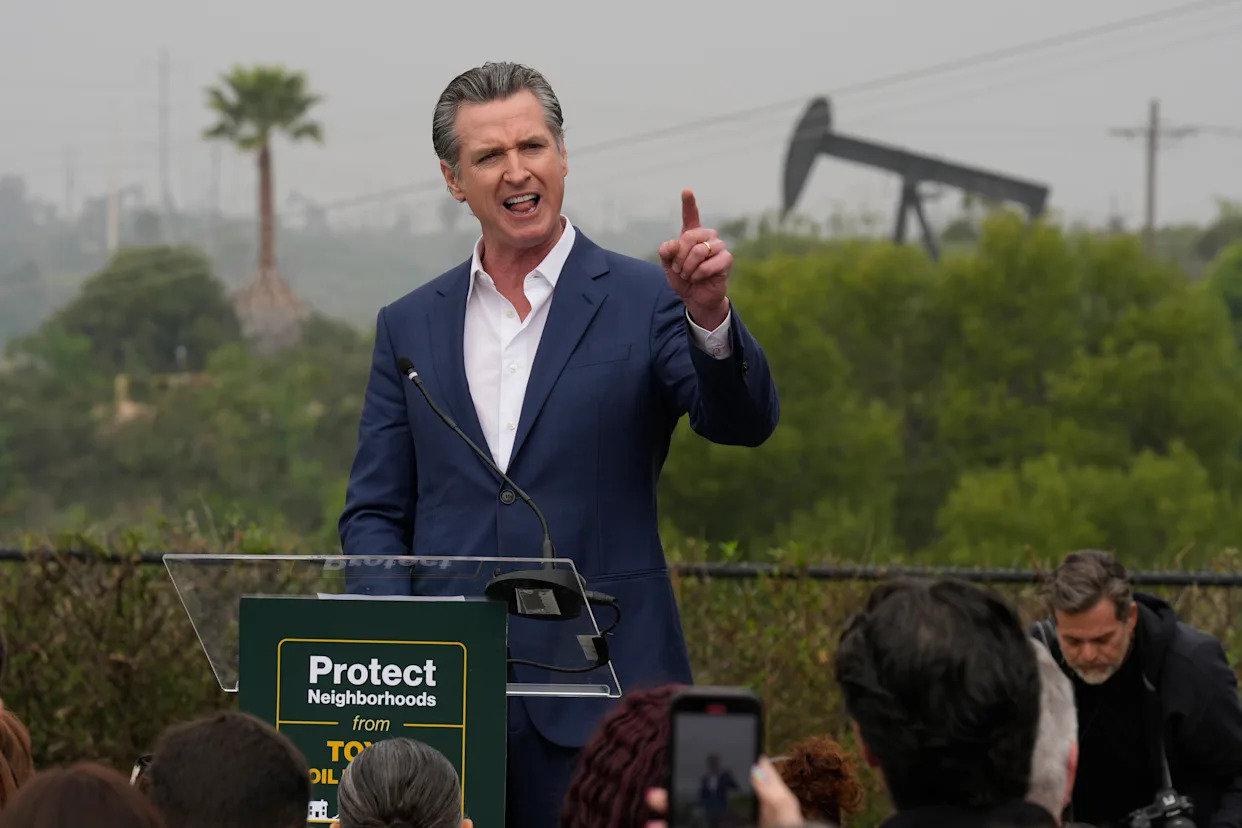
California Gov. Gavin Newsom spent the last four years provoking the big oil boogeyman. Now, it’s haunting him.
Newsom's casting of Big Oil as the villain behind the state's perpetually high fuel prices signaled the industry’s waning influence in Sacramento. But the plot took a dramatic turn for the governor and his party when two refineries in the state announced closure plans.
"Refineries all across the globe are struggling," Newsom said last month in unveiling a suite of proposals to keep refineries solvent, including holding talks with potential buyers and offering incentives to boost in-state oil drilling. "We've got some challenges, and so just require some new considerations."
The about-face is emblematic of Democrats' course correction on cost-of-living issues in the wake of the presidential election — and provides a real-time demonstration of the political risks of pursuing an aggressive transition away from fossil fuels.
“The reality is, if those refineries close and we have increased gas prices, it's going to be a problem for everybody,” said Andrew Acosta, a veteran California Democratic campaign consultant. “Not just Gavin Newsom, but every Democrat running for office.”
Democrats are grappling with that reality as they attempt to claw back voters from President Donald Trump and Republicans in an acknowledgement that conservative messaging that blue-state officials are out of touch with daily life has stuck. And while recent polling in deep-blue California shows voters still want their leaders to fight climate change, the state is not immune to this dynamic.
It represents a departure from a wave of enthusiasm around progressive climate policies that Newsom was stoking as recently as a month before the presidential election.
“They have been raking in unprecedented profits because they can,” Newsom said in October while signing a bill requiring refiners to store more gas to prevent shortages, a concept the industry warned would backfire. ”They’ve been screwing you for years and years and years.”
But then a fifth of the state's gasoline refining capacity started drying up. Phillips 66 announced in October that it would close its Southern California refinery by the end of 2025. Valero followed suit in April with the planned closure of its Northern California facility in 2026.
Fast forward to earlier this month, when Newsom announced he was taking action to stabilize in-state oil supplies. “It’s not rolling back anything — that’s actually marching forward in a way that is thoughtful and considered,” Newsom told reporters in July, after his administration proposed steering clear of the oil-profits cap the governor had championed as a way to keep refineries open.
Newsom spokespeople pointed to the governor’s comments during a Thursday press conference where he called the approach “completely consistent” with the state’s climate agenda, which has “always been about finding a just transition.”
He also touted a 2023 law that requires oil refiners to provide data about their operations, saying it tipped off the state about Valero’s closure plan.
“We would not have had that benefit of having information in advance, which has given us a year to begin the process of figuring out what to do,” Newsom said.
But oil companies' unexpectedly hasty retreat from the Golden State is forcing officials to reckon with their awkward transition away from gas that until now has largely been theoretical. And it has created a real threat for Democrats if they fail to respond adequately heading into the 2026 midterms after cost-conscious voters resoundingly returned Trump to office last year.
Even some environmentalists are having second thoughts.
“I think Democrats sort of failed to read the room, perhaps in a way that, unfortunately, Trump did,” said Katelyn Roedner Sutter, California director for the Environmental Defense Fund. “If we're not acknowledging people's day-to-day reality and the challenges they face, it's really hard for them to care about the existential threat that is climate change.”
Newsom took over from former Gov. Jerry Brown in 2019 and quickly went even further than his predecessor by not only pushing for policies that reduce demand for gas — like electric vehicle incentives — but also by attempting to reduce supply. He announced a ban on fracking in 2021 and signed a law that restricts oil drilling near sensitive sites like schools and hospitals. He also spearheaded a lawsuit to hold major oil companies liable for climate change damages and legislation to consider a cap on oil industry profits, while castigating the industry as a corrupt force fleecing Californians.
“[Brown’s] view was that we really need to change the demand and that the supply issues are less relevant,” said Ken Alex, who was a climate adviser to Brown and is now the director of Project Climate at the University of California, Berkeley. “Governors are always worried about gas prices because they're so visible to voters, so, of course, you have to consider where you want to pick your battles.”
Now the oil industry has Newsom over a barrel. Two days after he signed a law last year authorizing state officials to require refiners to store more gas and share resupply and maintenance plans with the state, Phillips 66 announced it would close its Los Angeles-area refinery. Six months later, Valero did the same with its Bay Area refinery.
Republicans pounced, and Newsom began his pivot. “I can assure you, beginning last night, we had all hands, and we’re in the process of addressing any anxiety that may be created or any market disruption that may be created by that announcement,” he said in April.
Andy Walz, Chevron’s president of downstream, midstream and chemicals, said California officials have made the state “uninvestable” for companies like his and that it had been only a matter of time before a refiner pulled the plug.
“I don't think they believed the industry was in trouble,” Walz said of California officials. “I think they misread what was really going on, and it took some real action by some competitors to get them woken up.”
Walz intends to continue pressing his advantage. He called Newsom’s proposal to increase in-state oil drilling “a recognition that there’s a problem,” but is pushing to unwind key pieces of the state’s climate agenda, like its cap-and-trade program and rules aimed at reducing emissions from oil tankers and other ships that dock in the state’s ports.
“The transition is slower than a lot of people thought," he said. "We need to see some action; they've got a chance to do some good things."
While the move away from fossil fuels poses challenges to all policymakers pursuing aggressive decarbonization goals, California faces a unique set of circumstances that complicate its transition. Throughout its history, the state has operated as a fuel island isolated from the rest of the country and it doesn’t have the infrastructure necessary to pipe in refined gasoline from its neighbors. That means the state can’t quickly respond to gas shortages when refineries go offline, leading to price spikes like in 2022 and 2023, when average prices soared past $5 per gallon.
Colin Murphy, deputy director of the University of California, Davis’ Policy Institute for Energy, Environment and the Economy, said that isolation has given the handful of oil companies that operate refineries in the state outsize power to control the market. But he also argued that California lawmakers underestimated the industry’s willingness to wield that power.
“The core lesson from this story is this is what happens when you let an industry gain market power and put itself in a position where there just aren't any alternatives,” Murphy said.
California leaders are still positioning the state as the front line of defense against the Trump administration’s assault on clean energy and environmental programs at a national level. It is taking the lead on a slew of lawsuits to loosen the president’s stranglehold on federal grants for electric vehicle chargers and environmental justice groups, and defending its authority to set stricter-than-federal vehicle emissions standards that Trump revoked last month.
That’s all well and good, but an intense focus by voters on affordability has underpinned policy debates in Sacramento this year, leaving some allies in the environmental community feeling burned, as they’ve watched their hard-fought momentum slip.
Newsom’s office began circulating a draft bill last month that would ease permitting for more in-state drilling in oil-rich Kern County, an effort that environmental justice groups have fought for years. The proposal includes measures that are an olive branch to these groups — including a well stimulation ban and a requirement for drillers to plug two wells for every new well they make — but that hasn’t dampened their frustration.
“It seems like a lot of our elected officials are driven above all by a fear that they'll be blamed for high gas prices,” said Bill Magavern, policy director at Coalition for Clean Air.
Their odds of shifting lawmakers’ focus with six weeks left in the legislative session are steep, as the idea has gained traction even amongst lawmakers known as climate stalwarts.
“Call me born again, but I have seen the light on exactly what you’re talking about,” Sen. Henry Stern told Republican colleagues during an April legislative hearing. “Kern County should be unleashed, and I'm there. … Don't send that to the White House, please.”

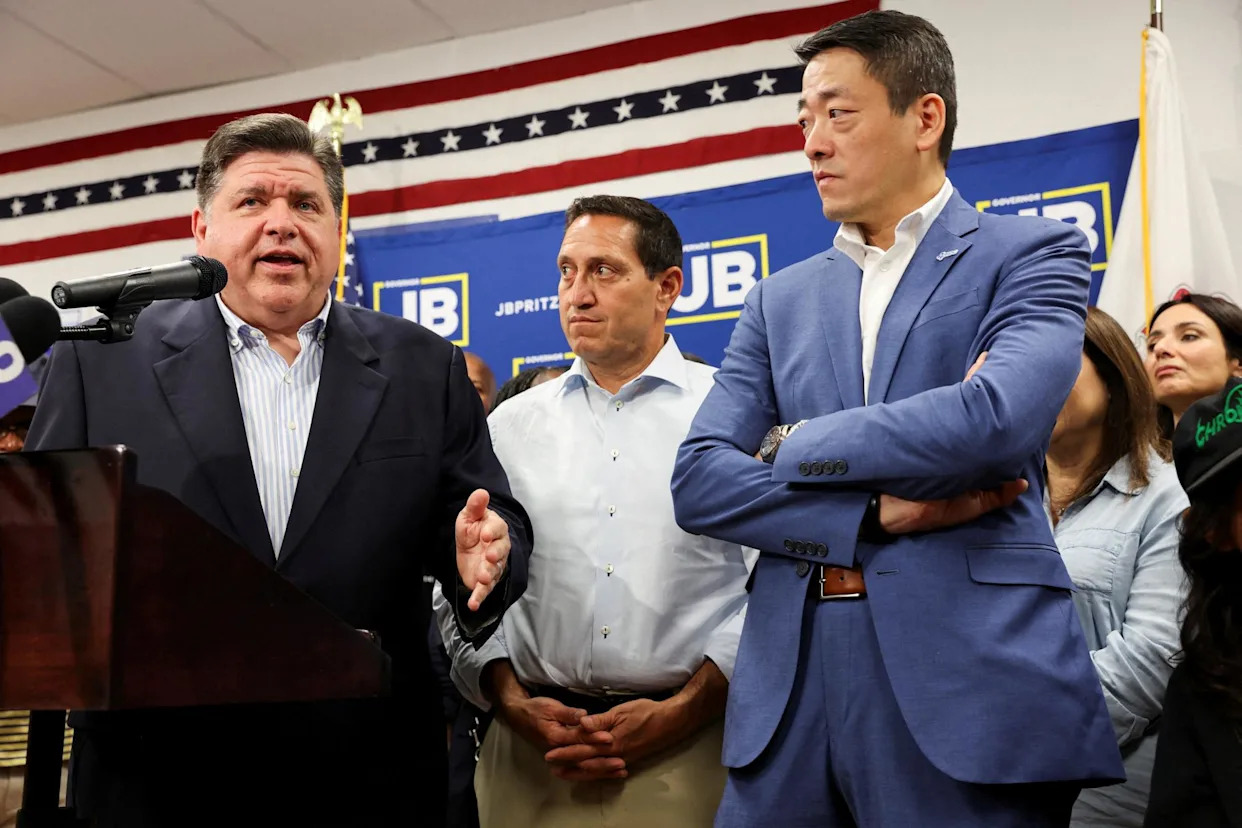
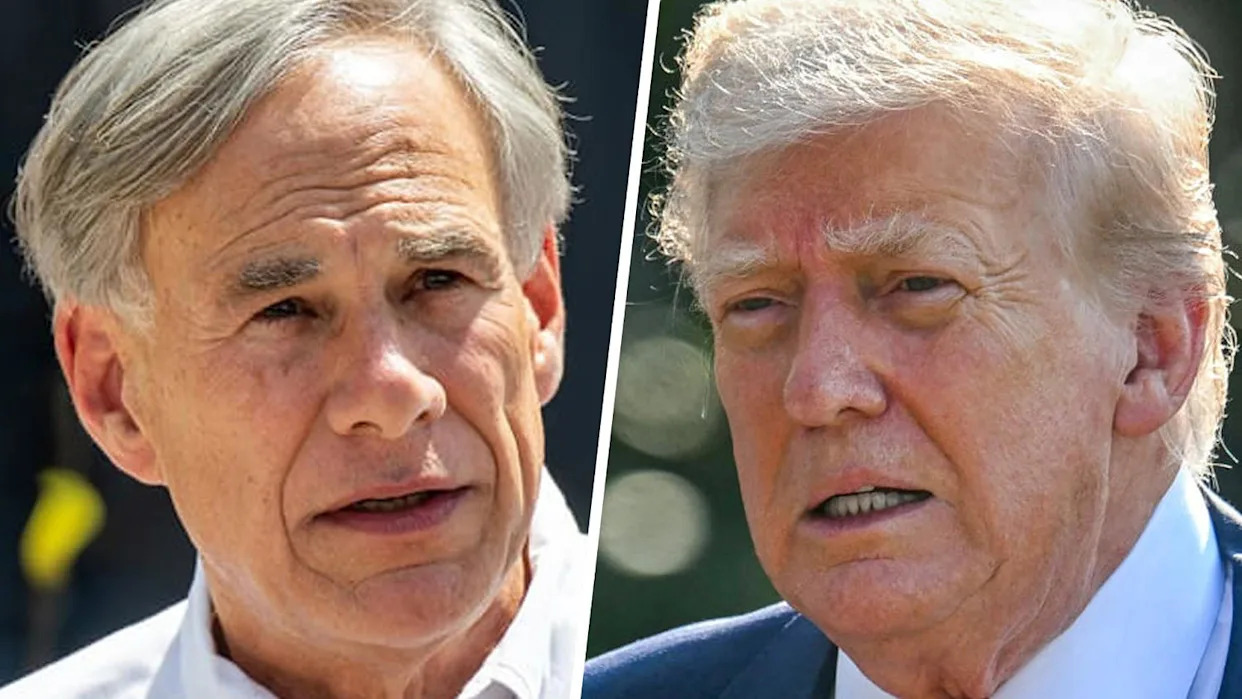
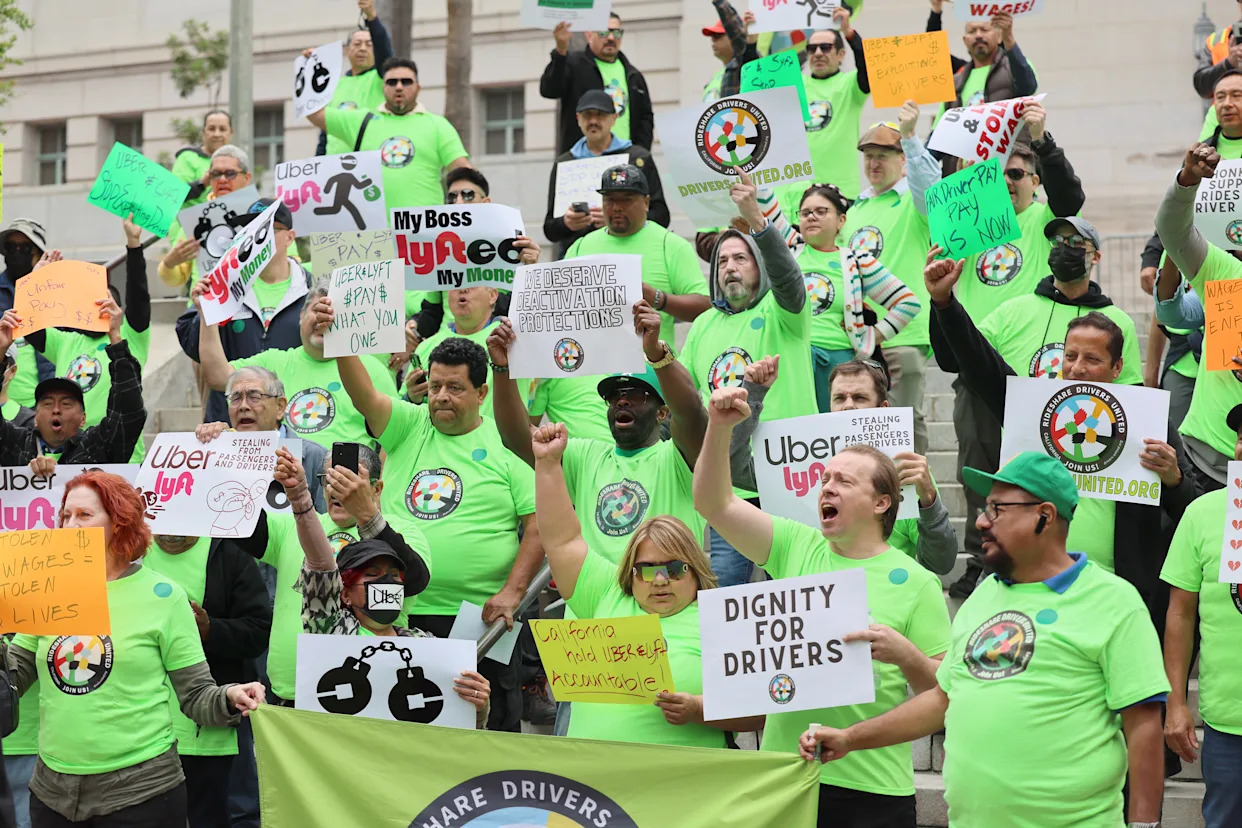
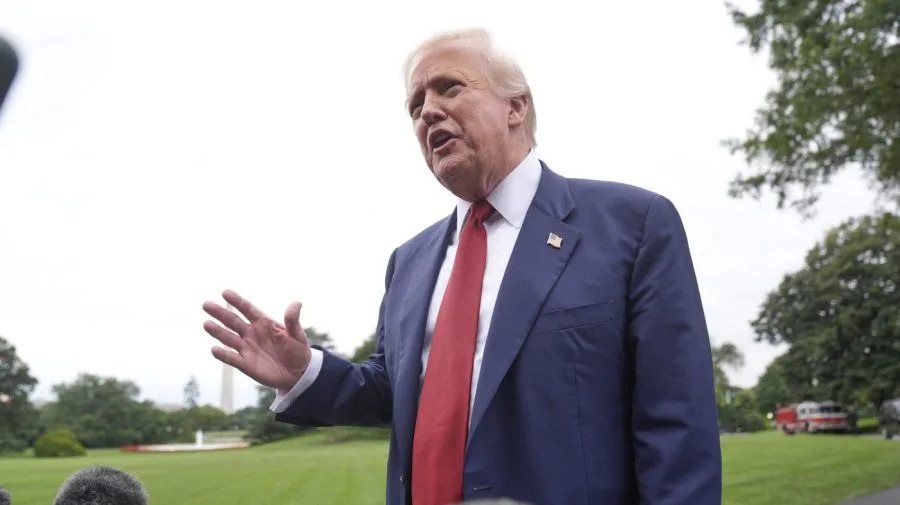

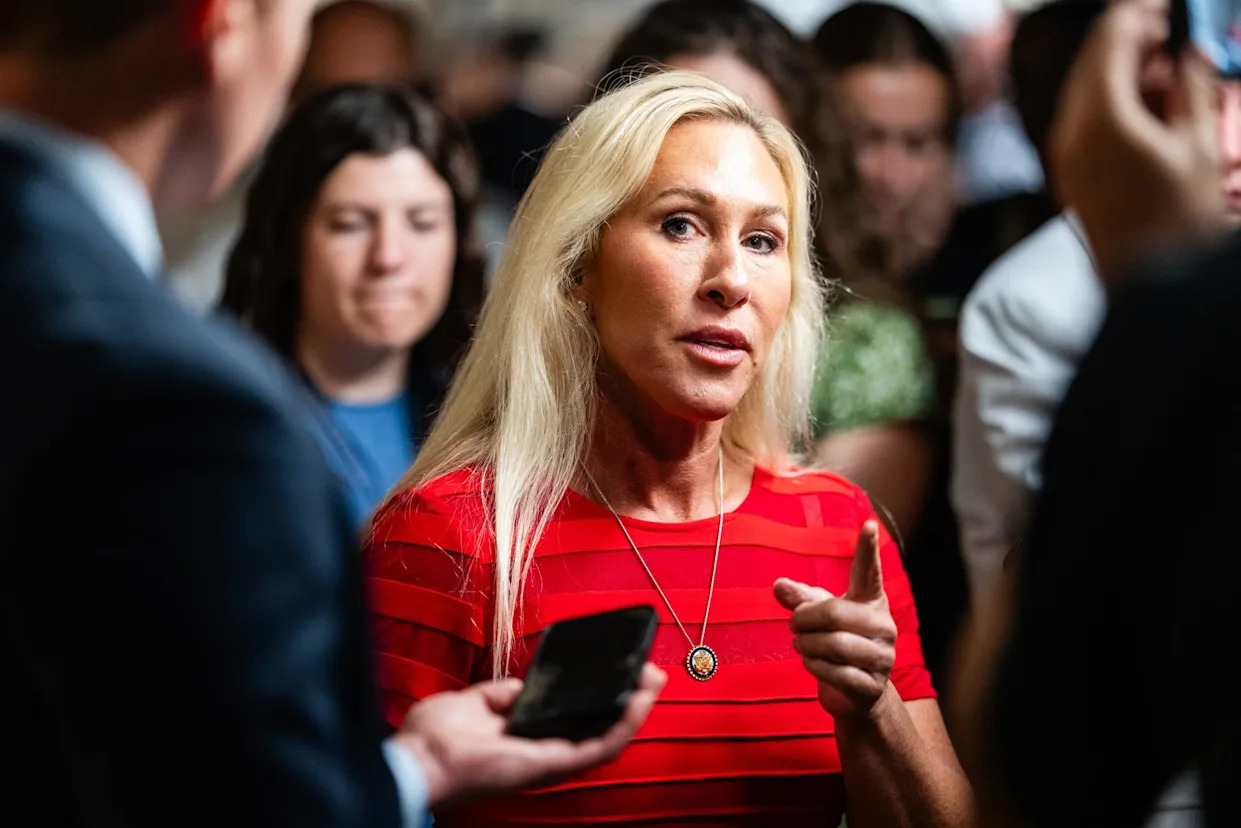
Comments